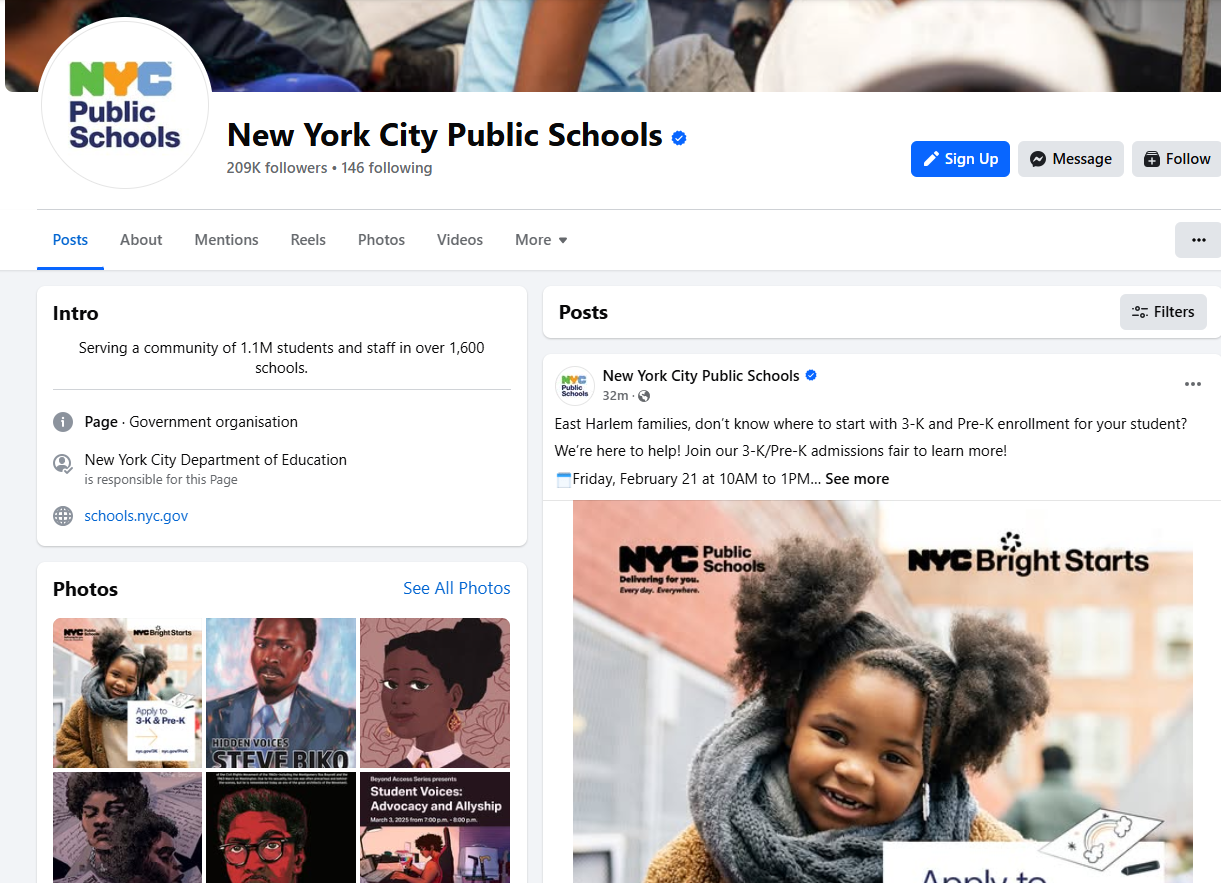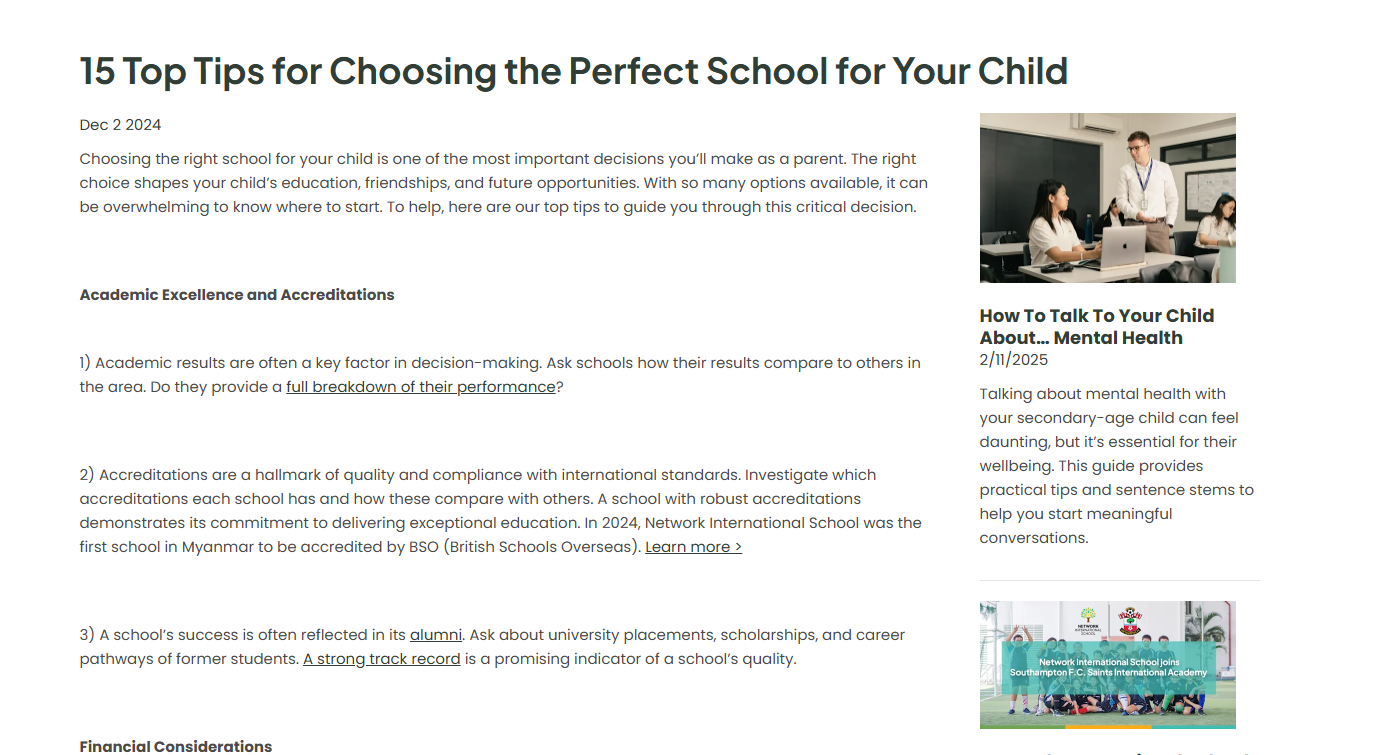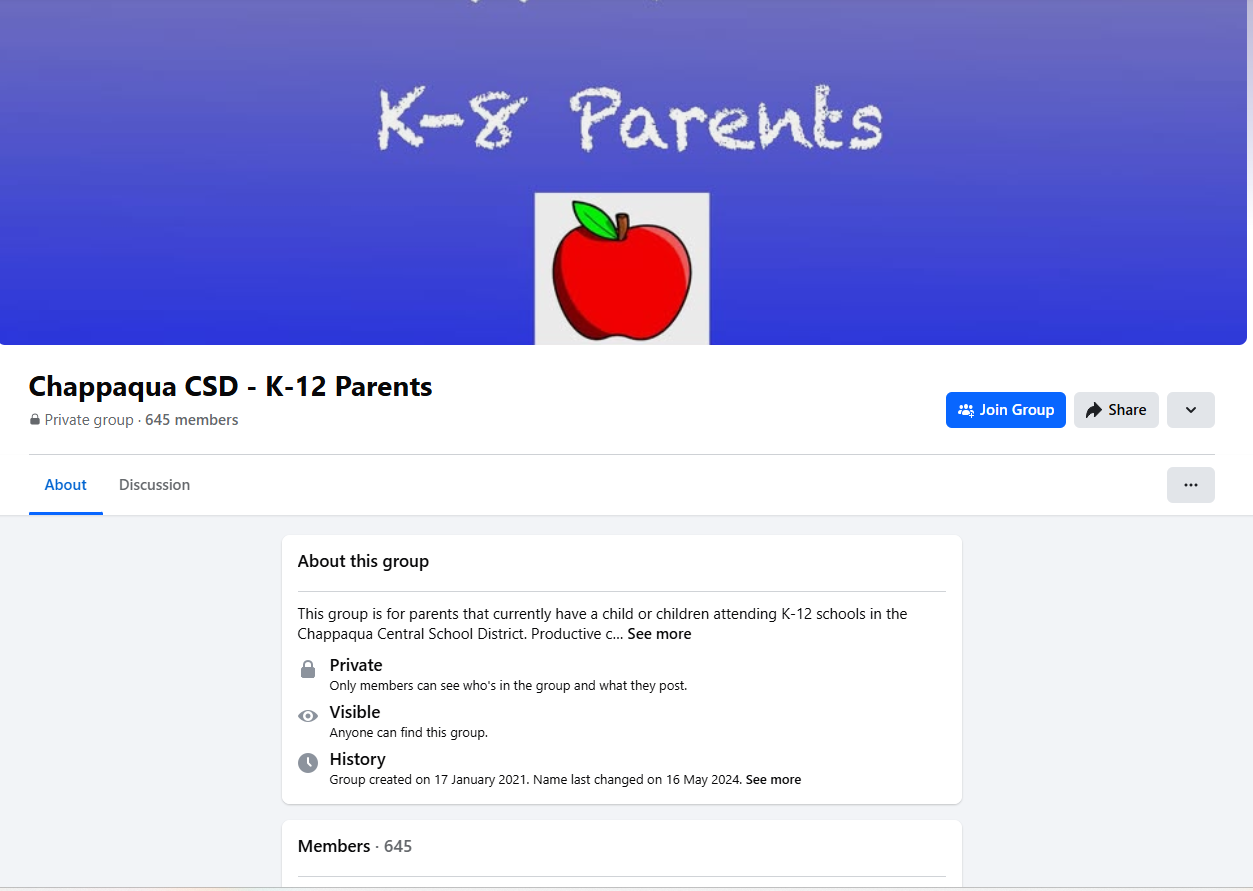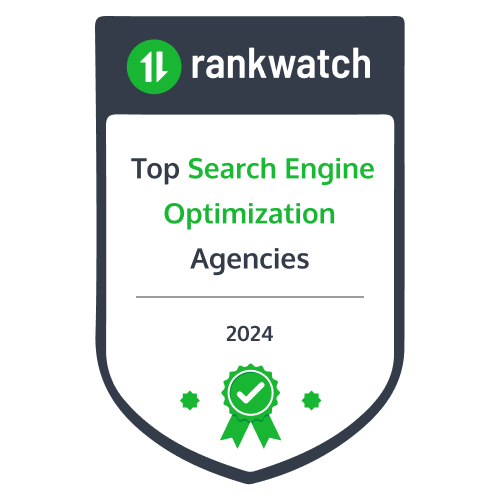The Role of Digital Marketing in K-12 Education: Engaging Prospective Students and Parents
Digital marketing has transformed how K-12 schools connect with prospective students and their families.
Today, parents and students turn to online platforms for information, making a strong digital presence essential for schools that want to stand out.
The stakes are high.
Families weigh many factors when choosing the right educational path, from academic programs to extracurricular opportunities. To engage them effectively, schools must meet them where they are: online.
Let’s look more closely at how digital marketing works and how to make a plan for your school.
How Digital Marketing for K-12 Education Plays a Key Role in Engaging Prospective Students and Parents
Digital marketing helps schools bridge the gap between their offerings and families’ needs.
With the right strategies, you can build trust, communicate value, and foster relationships — all before a family ever steps foot on campus.
With digital marketing strategies, you can:
Showcase Your School’s Competitive Edge and Unique Offerings
Every school has a story to tell. Digital marketing gives you the tools to share yours in engaging, impactful ways.
Whether you use virtual tours, videos of campus life, or success stories from alumni, you can highlight what makes your school stand out. For example, if your school has a cutting-edge STEM program, a short video featuring student projects can resonate with parents seeking innovation in education.
These transparent glimpses into your school environment build confidence. Families are more likely to choose a school that clearly showcases its strengths and values.
Target The Right Audiences
Digital tools help you pinpoint exactly who you need to reach. Social media ads, email campaigns, and search engine marketing help you focus on families within specific geographic areas. (Or those interested in niche programs, like theater or arts-integrated learning.)
For instance, a school promoting its dual-language immersion program can target families searching for bilingual education options.
Using your efforts to reach specific groups means your messages reach families actively looking for what you offer.
Engage In Meaningful Conversations
Parents value communication. Digital platforms like social media and webinars provide opportunities for two-way interaction.
Hosting a live Q&A session about the enrollment process or replying promptly to inquiries on Facebook shows families you care. For example, a parent asking about tuition assistance during a webinar can receive immediate answers.
Interactions like these create a foundation for relationships — turning prospective families into committed members of your school community.
Personalize Your Communication to Your Target Audience’s Needs and Concerns
Every family has unique priorities.
Some may focus on academic excellence, while others value extracurricular opportunities.
Tools like email automation and CRM systems help you deliver tailored messages that address these concerns.
Imagine a parent interested in receiving financial aid and receiving a detailed guide on available options. Or another learning about your school’s sports programs through a personalized email. Attention like this helps families feel seen and valued.
Use Data for Optimal Decision-Making
Analytics tools offer powerful insights into what resonates with your audience. Tracking which social media posts get the most engagement or which pages on your website attract the most traffic can guide your future campaigns, especially when planning a website redesign to enhance user experience and engagement.
If a blog post about how to get ready for high school does well, think about making a series of posts about similar topics.
A data-driven approach like this keeps your marketing efforts relevant and effective.
Build Long-Term Trust
Consistency builds trust.
Sharing valuable content, such as parenting tips or updates on school events, positions your school as a trusted partner in education.
Over time, this trust influences decisions. A parent who sees helpful, interesting social media posts from your school will often think of you more when it’s time to enroll their child.
Expand Accessibility
This aspect is so important.
Not every family learns about your school through word-of-mouth or local advertising. A strong digital presence ensures families outside your immediate community can find you.
Search-friendly websites and active social media accounts increase your visibility.
For example, a parent relocating to your city might discover your school through a Google search.
At the end of the day: Digital marketing creates connections. Focusing on specific groups can help your messages reach families who are actively looking for what you offer.
With that in mind, let’s take a look at how you can create your own digital marketing strategy.
How to Create a Digital Marketing Strategy for Your K-12 Organization
Here’s a step-by-step guide you can use to start planning your digital marketing strategy for your educational organization.
Step 1: Define Your Goals
Start with clear objectives.
Want to increase enrollment by a specific percentage? Boost engagement on social media? Promote a new program?
For example, a school starting a performing arts program might set a goal to get 50 new students who like theater within the year. Defining these goals provides direction for your marketing efforts.
Step 2: Understand Your Audience
Get to know the families you want to reach. (Parents might prioritize safety and academic rigor — while students might be drawn to extracurricular opportunities.)
Use surveys, social media insights, and enrollment data to create detailed personas.
For instance, if you discover many parents are concerned about STEM opportunities, highlight your coding classes and robotics club.
Step 3: Audit Your Online Presence
Review your current digital footprint before diving into new campaigns.
Is your website mobile-friendly? Does it include virtual tours, application forms, and an easy-to-navigate layout? Are your social media accounts active and engaging?
For example, if your Facebook page hasn’t been updated in months, it’s time to revitalize it with posts about upcoming events and student achievements.
Here’s an example of an active Facebook page:

Parents see you as a trusted source when you’re consistent on social media. According to Forbes, it can take a long time to notice results from your social media content. However, you should stick to your strategy for at least 4–6 months and then see what’s working and what needs to improve.
Step 4: Develop Key Messaging
What sets your school apart? Whether you focus on inclusivity or academic excellence, craft messages that reflect your values.
For example, “Preparing students for a tech-driven future with our advanced STEM program” clearly communicates your school’s strengths. Make sure these messages remain consistent across all platforms.
Step 5: Select the Right Digital Channels
Different audiences prefer different platforms.
Parents might frequent Facebook for updates, while students spend more time on Instagram or TikTok. Tailor your approach accordingly.
For example, a school promoting its annual science fair might share detailed information on Facebook — while posting behind-the-scenes videos on TikTok to engage students.
Step 6: Create High-Quality Content
Effective content addresses every stage of a family’s decision-making journey. Use blog posts, virtual tours, and email campaigns to guide families from awareness to enrollment. To maximize reach and engagement, leverage content distribution software to ensure your messaging is delivered across the right channels at the right time.
For instance, a blog titled “15 Top Tips for Choosing the Perfect School for Your Child” can attract parents early in their search. And a video testimonial from a current family can help reinforce their decision.

Step 7: Implement Marketing Automation
Automation tools simplify your outreach efforts.
Set up automated email sequences to remind families about open houses or application deadlines.
Consider segmenting your audience for personalized communication. For instance, you might have an email segment dedicated to parents with preschool-aged children. And another for parents with kindergarteners.
Step 8: Leverage Paid Advertising
Investing in target ads helps you expand your reach. You might use Google Ads to target search terms like “best private school near me,” and social media ads to promote open houses or new programs.
Remarketing campaigns can also help you re-engage families who visited your website but didn’t take the next step.
Step 9: Engage Through Social Media
Social media fosters community. Share posts about student achievements, upcoming events, and milestones. Features like live streams and polls encourage interaction.
For example, hosting a live tour of your campus on Instagram can attract prospective families — and answer their questions in real-time.
Step 10: Measure and Optimize
Analytics reveal what works and what doesn’t.
Track website traffic, social media engagement, and enrollment inquiries.
If videos consistently outperform other content, allocate more resources to video production. If influencers are helping you enroll more aligned students, invest more marketing dollars in influencer campaigns.
It may also be a good idea to scratch what’s not working — especially if you’ve been trying it for a while. For example, if organic posts on Instagram just aren’t doing it, consider focusing more on Instagram ads.
Be sure to regularly review your metrics to make sure your strategy stays effective.
Step 11: Engage in Community Building
Digital marketing nurtures relationships with current families (whose word-of-mouth can help you reach new ones). A parent portal or private Facebook group can help strengthen your school community.

For example, sharing photos from a recent field day in a private group fosters a sense of connection and pride among families.
Budget Well for Digital Marketing Success
Digital marketing requires resources. Be sure to allocate funds for professional content creation, paid ads, and the tools you need to execute campaigns effectively.
It’s also important to factor in costs for ongoing training, fundraising software, and other essential subscriptions to keep your campaigns running smoothly. Always track your spending to ensure your budget aligns with your marketing goals and provides a good return on investment.
Here’s a simple chart you can use to get organized:
Marketing Budget for [YOUR SCHOOL NAME] for [TIME FRAME]
| Category | Budget |
|---|---|
| Content Creation | |
| Paid Advertising | |
| Email Marketing | |
| SEO Campaigns | |
| Social Media Campaigns | |
| Marketing Specialists | |
| Influencer Campaigns | |
| Affiliate Campaigns | |
| Training and Development | |
| Tool Subscriptions |
If managing everything in-house feels overwhelming, consider hiring specialists to handle your marketing efforts. This will allow your team to focus on important tasks while experts manage the more technical aspects.
Speaking of …
No Time for Marketing? Leave It to the Pros
Digital marketing for K-12 education requires time, expertise, and consistency. If your team is stretched thin or lacking the necessary resources, letting a dedicated team handle your marketing can relieve the pressure.
At SEO Hereo, we understand the unique needs of educational institutions and how to connect with families online. From managing your online presence to developing targeted campaigns, we work with you to ensure your school stands out and reaches the right audience.
Reach out today to learn how we can help you attract and engage more families effectively.
Author Bio:

Ioana Wilkinson
Ioana is a business strategist and content writer for B2B tech and SaaS brands. She also helps aspiring entrepreneurs build remote businesses. Born in Transylvania and raised in Texas, Ioana has been living the digital nomad life since 2016. When she’s not writing, you can catch her snorkeling, exploring, or enjoying a café con leche in Barcelona!




